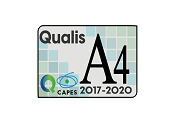Strategies for the use of predicting dropout in higher education
DOI:
https://doi.org/10.29378/plurais.v9i00.18892Keywords:
Dropout, College, Higher Education, Educational Data Mining, Institutional ActorsAbstract
Many studies aiming to find the most appropriate and effective techniques and practices for identifying factors that lead to student attrition end up relying on the use of technology to enhance data analysis and achieve a greater volume of processed information. The present study aims to identify best practices for supporting students who are identified early through data mining. To do so, it sought to identify the main institutional actors who can make use of this data to provide support to students identified as being at risk of dropping out. These actors were identified based on the structure of a public university located in the interior of Rio Grande do Sul, Brazil. The mapped actors were determined to be the best channels for receiving student data and the primary actions to be taken by each of them. At the end of the study, questionnaires were sent to the actors themselves, who individually assessed the suggestions, indicating the level of relevance and applicability.
Downloads
References
ALBOANEEN, Dabiah et al. Development of a Web-Based Prediction System for Students’ Academic Performance. Data, [S. l.], v. 7, n. 2, p. 21, 29 jan. 2022. MDPI AG.
AL-FAIROUZ, Ebtehal; AL-HAGERY, Mohammed. The most efficient classifiers for the students’ academic dataset. International Journal of Advanced Computer Science and Applications, [S. l.], v. 11, n. 9, p. 501–506, 2020.
ANDIFES/ABRUEM/SESu/MEC. Comissão Especial Sobre a Evasão nas Universidades Públicas Brasileiras. Diplomação, retenção e evasão nos cursos de graduação em instituições de ensino superior públicas. Brasília, 1996. 152p.
BERENS, Johannes et al. Early Detection of Students at Risk - Predicting Student Dropouts Using Administrative Student Data from German Universities and Machine Learning Methods. Zenodo, [S. l.], v. 11, n. 3, p. 1-41, 23 dez. 2019. Zenodo.
FLORES, Vaneza; HERAS, Stella; JULIAN, Vicente. Comparison of Predictive Models with Balanced Classes Using the SMOTE Method for the Forecast of Student Dropout in Higher Education. Electronics, [S. l.], v. 11, n. 3, p. 457, 3 fev. 2022. MDPI AG.
GIL, Antonio Carlos. Como elaborar projetos de pesquisa. São Paulo: Atlas, 2002.
GIL, Antonio Carlos. Métodos e técnicas de pesquisa social. 6. ed. São Paulo: Atlas, 2008. 200 p.
HOWLETT, Michael; RAMESH, M.; PERL, Anthony. Política pública: seus ciclos e subsistemas – uma abordagem integral. São Paulo: Campus, 2013.
OECD. Education at a Glance 2019: OECD Indicators. Education at a Glance. 2019.
OLIVEIRA, T. Escalas de mensuração de atitudes: Thurstone, Osgood, Stapel, Likert, Guttman, Alpert. Administração On Line, [S. l.], v. 2, n. 2, p. 1-25, 2001.
PALACIOS, Carlos et al. Knowledge Discovery for Higher Education Student Retention Based on Data Mining: machine learning algorithms and case study in chile. Entropy, [S. l.], v. 23, n. 4, p. 485, 20 abr. 2021. MDPI AG.
PÉREZ-GUTIÉRREZ, Boris Rainiero. Comparación de técnicas de minería de datos para identificar indicios de deserción estudiantil, a partir del desempeño académico. Revista Uis Ingenierías, [S. l.], v. 19, n. 1, p. 193-204, 1 jan. 2020. Universidad Industrial de Santander.
RIBEIRO, Marinalva Lopes. A relação professor-estudante na educação superior. Educação em Análise, Londrina, v. 5, n. 1, 2020, p. 185-200.
SILVA, Izaqueline et al. Estratégias das Coordenações dos Cursos de Ciências Contábeis para combater a evasão. Revista Universo Contábil, [S. l.], p. 61-81, fev. 2019.
THORN, James. Random Forest for Feature Importance: learn how to use random forest models to calculate the importance of the features in your data. 2020. Disponível em: https://towardsdatascience.com/random-forest-for-feature-importance-ea90852b8fc5. Acesso em: 18 jul. 2023.
TINTO, Vincent. Leaving college: Rethinking the causes and cures of student attrition. Chicago: University of Chicago Press. 1993.
YAğCi, Mustafa. Educational data mining: prediction of students' academic performance using machine learning algorithms. Smart Learning Environments, [S. l.], v. 9, n. 1, p. 1-19, 3 mar. 2022.
Published
How to Cite
Issue
Section
License
Copyright (c) 2024 Piero Salaberri, Sandra Piovesan, Valesca Irala (Autor)

This work is licensed under a Creative Commons Attribution-NonCommercial-NoDerivatives 4.0 International License.
Autores que publicam nesta revista concordam com os seguintes termos:
- Autores mantém os direitos autorais e concedem à revista o direito de primeira publicação, com o trabalho simultaneamente licenciado sob a Creative Commons Attribution License que permitindo o compartilhamento do trabalho com reconhecimento da autoria do trabalho e publicação inicial nesta revista.
- Autores têm autorização para assumir contratos adicionais separadamente, para distribuição não-exclusiva da versão do trabalho publicada nesta revista (ex.: publicar em repositório institucional ou como capítulo de livro), com reconhecimento de autoria e publicação inicial nesta revista.
- Autores têm permissão e são estimulados a publicar e distribuir seu trabalho online (ex.: em repositórios institucionais ou na sua página pessoal) a qualquer ponto antes ou durante o processo editorial, já que isso pode gerar alterações produtivas, bem como aumentar o impacto e a citação do trabalho publicado (Veja O Efeito do Acesso Livre).
O conteúdo dos artigos é de estrita responsabilidade de seus autores, assumindo responsabilidade de todo o conteúdo fornecido na submissão, e que possuem autorização para uso de conteúdo protegido por direitos autorais reproduzido em sua submissão.










